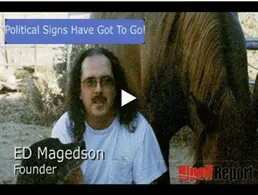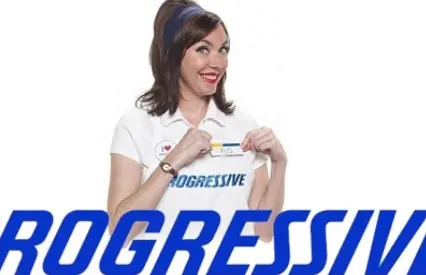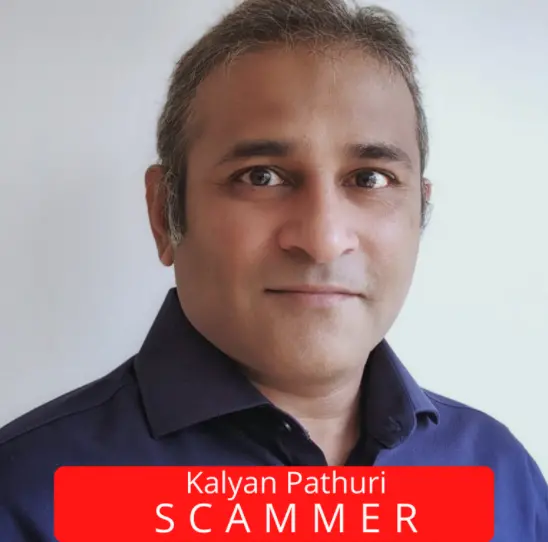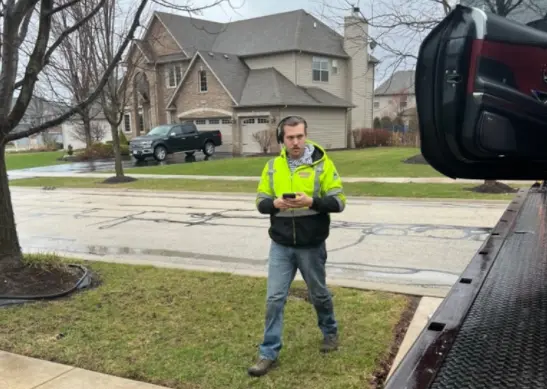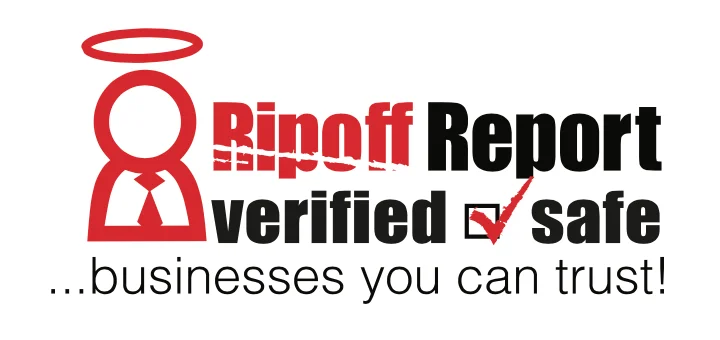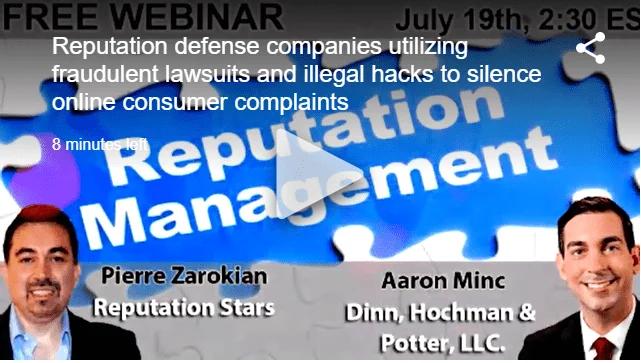Complaint Review: David Mond, Insolvency, Hodgsons - Cheshire Nationwide
- David Mond, Insolvency, Hodgsons Nelson House, Park Rd, Timperley, Cheshire, WA14 Nationwide United Kingdom
- Phone:
- Web: http://www.hodgsons.co.uk/
- Category: Questionable Activities
David Mond, Insolvency, Hodgsons David Mond, Insolvency, Cheshire Nationwide
*Consumer Comment: David Mond, Hodgsons, Insolvency, Cleardebt
*Consumer Comment: David Mond Hodgsons Insolvency
*Consumer Comment: David Emanuel Merton Mond
*Consumer Comment: Defendants successful in a claim for wrongful trading brought by a Liquidator
listed on other sites?
Those sites steal
Ripoff Report's
content.
We can get those
removed for you!
Find out more here.
Ripoff Report
willing to make a
commitment to
customer satisfaction
Click here now..
Costs against insolvency practitioners
The case of Jolyon Smurthwaite -v- (1) Robin Simpson-Smith (2) David Emmanuel Merton Mond [2006] EWCA Civ 1183 is a reminder that insolvency practitioners should be careful to preserve their utter independence from any party, either the debtor or any creditor. If not, they may be personally liable for costs.
The facts
In this case, proceedings were brought by Mr Smurthwaite under section 262(2)(a) and (b) of the Insolvency Act 1986 to set aside an individual voluntary arrangement (IVA) proposed, and subsequently effected, by Mr Robin Simpson-Smith as debtor, of which Mr David Mond,
a licensed insolvency practitioner, was formerly nominee and latterly the supervisor.
The decision On 23 April 2005 HHJ Rich QC, sitting as a judge of the High Court in the Chancery
Division, set aside the IVA; and ordered that Mr Mond be personally responsible for 50 per
cent of Mr Smurthwaite's costs of the issues upon which he, Mr Smurthwaite, had succeeded.
Mr Mond appealed against that order.
Mr Mond was chairman of the creditors’ meeting at which the proposal for the IVA was considered and approved. Mr Smurthwaite was admitted to vote in an amount of £47,827. He voted against the proposal. Approval to the proposal was secured by the vote of Miss Dianne Williams, with whom the debtor was then living at a property known as The Old Mill in Gloucestershire. She was admitted to vote in an amount of £124,734; of which £120,401 was said to be a debt owed to her in consideration for her giving up a claim to beneficial ownership of one half share in The Old Mill.
It transpired that a meeting between Mr Mond, the debtor and Miss Williams took place on30 March 2004, the purpose of which was to discuss and finalise the proposal to creditors. At that meeting Mr Mond suggested to Miss Williams that her claim to a beneficial interest in
the house be treated for the purpose of the IVA as a creditor claim; but, nevertheless, her claim to a beneficial interest in the property would be reserved. HHJ Rich QC decided that "Miss Williams was not a creditor in respect of £120,401 on the basis asserted by [Mr Mond]. He was [treating] what was clearly a claim to a beneficial interest in the property as if it had been converted by an arrangement made after the interim
order for the purpose of a creditors' meeting into a debt. This was, in my judgment, a material irregularity in [Mr Mond’s] conduct at the meeting". Both the Judge at first instance and the Court of Appeal agreed that it was self-evident that Miss Williams should not have been admitted to vote in an amount of £124,000.
The issues
As against the chairman of the creditors' meeting, the costs of a successful application under section 262 do not necessarily follow the event. An order should be made against the nominee personally only if his conduct fell below that of a reasonable licensed insolvency practitioner, acting reasonably.
Mr Mond had a duty not only to the debtor, or even primarily to the debtor, but also a duty to the creditors, including particularly Mr Smurthwaite. However, he had taken sides in the dispute; rather than recognising that it was plainly wrong to admit Miss Williams to vote in
respect of a debt, which was not, at that time, owed to her and in relation to which there was no binding obligation.
The effect of admitting Miss Williams to vote was that she procured that the IVA was approved by claiming as a creditor – so appearing to surrender her claim in the property; but, once the arrangement was approved, she reverted to asserting her claim against the property
to the prejudice of the other creditors. Both the Judge at first instance and the Court of Appeal
decided that (1) that was not a position that a reasonable insolvency practitioner, acting reasonably, could have regarded as acceptable; (2) by treating Miss Williams' claim to a beneficial interest in the property as if it were a debt - and so admitting her to vote – Mr
Mond fell below the standard of conduct that could be expected from a professional insolvency practitioner; and, (3) Mr Mond should accordingly be liable for the costs on which Mr Smuthwaite succeeded.
Summary
If a liquidator brings proceedings in his own name, he is personally liable for the costs in the ordinary way, though he may be entitled to an indemnity out of the assets of the company. If a liquidator brings or defends proceedings in the name of the company, he is not a party to
the litigation; and would not usually be personally liable for the costs.
A liquidator may, however, be liable to pay costs personally as a non-party to proceedings brought by the insolvent company. The court would only exercise that jurisdiction in exceptional circumstances where there had been impropriety on the part of the liquidator. It
was not sufficient that the liquidator had been unreasonable. There had to have been impropriety. The action had to be brought or continued in bad faith in the sense of the claim not being reasonably arguable or being brought for an ulterior purpose. In Metalloy Supplies Ltd (in liq) v MA (UK) Ltd [1997] 1 All ER 418 the Judge at first instance made such an order against the liquidator. However, he failed to consider the
question of impropriety and the Court of Appeal held that there was nothing improper in the liquidator's conduct and accordingly allowed the appeal.
Comment
For more information on the circumstances in which the Court may make an order for costs against a non-party, see the article by Simon Hobbs in our October 2006 Corporate and Commercial newsletter. However, it should be borne in mind that the caution necessary in all
cases where an attempt is made to render a non-party liable for costs is greater in the case of a liquidator having regard to public policy considerations; namely the public interest demands that liquidators should not be exposed to personal liability for costs simply where they act for
insolvent companies in performing their duties to collect in the assets of that company. The normal remedy for a defendant to an action brought by a liquidator on behalf of an insolvent company would be to obtain an order for security for costs.
This report was posted on Ripoff Report on 06/07/2013 12:53 PM and is a permanent record located here: https://www.ripoffreport.com/reports/david-mond-insolvency-hodgsons/nationwide/david-mond-insolvency-hodgsons-david-mond-insolvency-cheshire-nationwide-1057279. The posting time indicated is Arizona local time. Arizona does not observe daylight savings so the post time may be Mountain or Pacific depending on the time of year. Ripoff Report has an exclusive license to this report. It may not be copied without the written permission of Ripoff Report. READ: Foreign websites steal our content
If you would like to see more Rip-off Reports on this company/individual, search here:
#4 Consumer Comment
David Mond, Hodgsons, Insolvency, Cleardebt
AUTHOR: Pierce - ()
SUBMITTED: Wednesday, January 20, 2016
TC01229: David Mond
LNB News 14/07/2011 42
Published Date
14 July 2011
Jurisdiction
England; Scotland; Northern Ireland; Wales
Citation
TC01229
Decision Date
8 June 2011
Court
First-tier Tribunal (Tax)
Judges
DR CHRISTOPHER STAKER
Decision
ALLOWED
Catchwords
- Income tax -
Abstract
APPEALS—application for permission to bring appeal outside the time limit for doing so—permission granted.
Full Text
An accountant (M) applied to lodge a late appeal against a surcharge notice. HMRC opposed the application but the First-tier Tribunal granted it. Judge Staker held that the case was 'very finely balanced', but observed that the appeal had only been 47 days late, and that M had a 'good record as a taxpayer'.
| TRIBUNAL: | FIRST-TIER TRIBUNAL (TAX) |
| DECISION NUMBER: | TC01229 |
| APPELLANTS: | MR DAVID MOND |
| CASE REFERENCE NUMBER: | TC/2010/06998 |
| NEUTRAL CITATION: | |
| RESPONDENTS: | THE COMMISSIONERS FOR HER MAJESTY'S REVENUE AND CUSTOMS |
| TRIBUNAL JUDGE: | DR CHRISTOPHER STAKER |
| TRIBUNAL MEMBER: | MR HENRY RUSSELL |
| DATE: | 11 MAY 2011 |
| RESULT OF THE APPEAL: | ALLOWED |
The Tribunal determined the appeal on 11 May 2011 without a hearing under the provisions of Rule 26 of the Tribunal Procedure (First-tier Tribunal)(Tax Chamber) Rules 2009 (default paper cases) having first read the Notice of Appeal dated 6 September 2010, HMRC's Statement of Case dated on 18 March 2011, and other papers in the case.
DECISION
Introduction
1. By a letter to HMRC dated 29 July 2010, the Appellant indicated that he wished to appeal against late payment surcharge notices dated 13 May 2010 (in respect of the 2007/08 tax year) and 3 April 2010 (in respect of the 2008/09 tax year).
2. By a letter to the Appellant dated 3 August 2010, HMRC responded that the Appellant did not have a valid appeal as it was made outside the time limits, and the Appellant did not have a "reasonable excuse" for the late appeal. That letter however also addressed the substance of the Appellant's case, stating also that he did not have a "reasonable excuse" for not paying the tax liabilities.
3. By a further letter of 12 August 2010, in response to a letter from the Appellant dated 10 August 2010, HMRC repeated its view that the Appellant did not have a "reasonable excuse" for the late appeal. However, it also addressed the substance of the matter, and found that the Appellant did not have a "reasonable excuse" for failure to pay the tax liability on time.
4. The Appellant subsequently commenced these proceedings before the Tribunal. The notice of appeal states that the Appellant is seeking to appeal against the HMRC decisions of 3 August 2010 and 12 August 2010.
5. The Tribunal issued directions on 2 December 2010 concluding that the only matter for it to consider in these proceedings is whether to grant an application under s.49(2)(b) of the Taxes Management Act 1970 ("TMA") permitting the Appellant to bring this appeal outside the time limit for doing so. The Tribunal directed the parties to file further submissions and any evidence directed to this particular issue. A further direction was subsequently issued granting the Appellant an extension of time for filing his submissions.
6. The Appellant filed submissions in relation to this issue dated 14 January 2011.
7. HMRC filed submissions in response on 14 February 2011. On 18 March 2011, HMRC notified the Tribunal that one of the surcharge notices which was the subject of the late appeal, relating to the 2008/09 tax return, has been cancelled, so that the only remaining question was whether to allow a late appeal in relation to the surcharge in respect of the year 2007/08. HMRC provided an updated statement of case dated 18 March 2011.
8. No reply was received from the Appellant to the HMRC submissions and neither party requested a hearing.
The relevant legislation
9. Section 49 of the TMA states as follows:
(1) This section applies in a case where-
(a) notice of appeal may be given to HMRC, but
(b) no notice is given before the relevant time limit.
(2) Notice may be given after the relevant time limit if-
(a) HMRC agree, or
(b) where HMRC do not agree, the tribunal gives permission.
(3) If the following conditions are met, HMRC shall agree to notice being given after the relevant time limit.
(4) Condition A is that the appellant has made a request in writing to HMRC to agree to the notice being given.
(5) Condition B is that HMRC are satisfied that there was reasonable excuse for not giving the notice before the relevant time limit.
(6) Condition C is that HMRC are satisfied that request under subsection (4) was made without unreasonable delay after the reasonable excuse ceased.
(7) If a request of the kind referred to in subsection (4) is made, HMRC must notify the appellant whether or not HMRC agree to the appellant giving notice of appeal after the relevant time limit.
(8) In this section "relevant time limit", in relation to notice of appeal, means the time before which the notice is to be given (but for this section).
The arguments of the parties
10. The Appellant submits that:
(1) The 30 day time limit for appealing against the 13 May 2010 surcharge notice was missed by only 47 days, which is not excessive.
(2) The surcharge notice was sent to the Appellant's business address rather than his home address which is where HMRC normally corresponds with him.
(3) The surcharge notice that was sent to his business address contained an incorrect town address of "Altrincham", the correct town being "Timperley".
(4) The surcharge notice was received at the office on 17 May 2010 and was incorrectly placed in a basket of an employee who was on maternity leave.
(5) The appellant has been paying tax for over 50 years and is a conscientious business person who accepts the need to comply with all legal requirements and as a chartered accountant has attempted to ensure over the years that this has been instilled by him to his former audit clients.
(6) The delay in submitting the appeal was also due to the continuous exchange of correspondence with various offices of HMRC regarding payment proposals, which diverted the Appellant's mind as to the need to submit an appeal at the appropriate time.
(6) The Appellant is totally responsible for running a small business and the Appellant was left with a considerable amount of additional work following is partner's untimely death.
(7) The Appellant suffers health-wise and has lapses of memory.
11. HMRC submits that:
(1) A person wishing to have an appeal admitted outside the statutory time limit set by Parliament must have a good reason for doing so. The Appellant has failed to act in a timely manner without good reason.
(2) Allowing a late notice of appeal will unfairly prejudice HMRC. In carrying out its public administration of the tax system in a fair and just manner and resourcing its business accordingly, HMRC is entitled to expect that time limits prescribed in law are given due weight. To allow a late appeal without good reason undermines the power and intent of the Parliament and the ability of HMRC to carry out its business in the administration of its appeals process.
(3) Whether the period of lateness is unduly excessive depends on what the reasons were for the appeal being made late in the first place, and whether the appellant acted in a timely and appropriate manner once the obstacle that prevented the appeal being made in time was removed. It can be argued that any length of time beyond the statutory time limit is excessive if there is no good reason.
(4) Communications from HMRC prior to and after the issue of the surcharge notice were sent to the same address and were received by the Appellant. The Appellant could have asked HMRC to cease sending mail to that address if he had so wished.
(5) The Appellant acknowledges that the surcharge notice was received in the office on 17 May 2010. Presumably, as with earlier correspondence, the surcharge notice was opened and stamped with the date of receipt. It is reasonable to believe that someone would have read the notice and this time and recognised its significance. If it was not brought to the Appellant's notice, the Appellant has to take responsibility for the consequences.
(6) Earlier correspondence foreshadowed that a surcharge would be charged, and the notice should therefore not have come as a surprise.
(7) The Appellant has not stated exactly when the surcharge notice was brought to his attention.
(8) HMRC concedes that it has no reason to challenge the Appellant's statement referred to in paragraph 10(5) above.
(9) Contrary to what the Appellant suggests, the fact that the Appellant had ongoing correspondence with HMRC on the matter of payment of the underlying tax could not have "diverted" his mind from the need to appeal on time unless he had notice of the surcharge notice within the time limit for appealing, in which case his only argument is that he forgot.
(10) The Appellant's partner died in February 2008, over two years before the issue of the surcharge notice.
(11) No evidence has been provided of the medical issues referred to by the Appellant, which were not raised previously and which if true would suggest that it would have been prudent for the Appellant to have someone else take control of matters on his behalf.
(12) In his initial appeal to HMRC in July 2010, and his initial appeal to the Tribunal in September 2010, the Appellant claimed not to have received the surcharge notice because he was living outside the UK when the notice was sent. The Appellant claimed that he does not live in the UK from May to September in any year. If so, he should make arrangements in respect of post in his absence.
The Tribunal's view
12. The Tribunal has considered all of the evidence and arguments before it.
13. Section 49(2)(b) of the TMA does not contain a "reasonable excuse" test. It would seem to follow from the wording of that provision, and from the cases of R (Browallia Cal Limited) v GCIT [2003] EWHC 2779 (Admin) at [12]-[14] and R (Cook) v GCIT [2009] EWHC 590 (Admin) [2003] EWHC 2779 (Admin), that the discretion of the Tribunal under s.49(2)(b) of the TMA is at large, and involves a weighing of all relevant considerations.
14. The Tribunal takes into account the public interest in the finality of tax matters and in the finality of litigation, and that time limits for bringing appeals exist for a good reason. Indeed, that can be considered the starting point of any consideration of an application under s.49(2)(b). It is for the applicant to show reasons why an application to appeal out of time should be granted. The burden is not on HMRC to establish reasons why the extension should not be granted.
15. The Tribunal finds that each application to appeal out of time turns on its own particular facts and circumstances. Given that the Tribunal is not limited to a consideration of whether the Appellant has a "reasonable excuse" for the lateness, it will consider the circumstances as a whole, and not merely the soundness of the reasons for the lateness of the appeal.
16. While the burden is on the Appellant to show reasons why permission should be granted to appeal out of time, the strength of the considerations that must be established by the Appellant to justify permission being granted will depend on the strength of the countervailing considerations militating against the grant of permission.
17. In the present case, the Tribunal takes into account the shortness of the period of delay (47 days), the relatively substantial amount at stake (£9,783.71 at the time that the application for permission was made, and now £5,302.02 following cancellation of one of the surcharge notices), the Appellant's prior good record as a taxpayer which has been conceded by HMRC, and the absence of any specific prejudice toHMRC.
18. The Tribunal is unimpressed by suggestions that the Appellant had difficulties receiving mail. The claim that the surcharge notice was received in an office while the Appellant was abroad, and then erroneously put in the basket of a person on leave, carries scant weight in the absence of detailed evidence about exactly when the surcharge notice was brought to the Appellant's attention, and about what arrangements the Appellant had made for receiving mail while abroad, and what went wrong. The Tribunal considers that if the Appellant is absent from his normal mailing address for a period, the responsibility must be on him to make arrangements to ensure that he receives mail sent to him byHMRC in his absence. The Tribunal notes that in relation to the present application, the Appellant applied for and was granted an extension of time for filing his submissions on the basis that he had been absent from the UK during the winter months. Although the Tribunal granted the requested extension, it noted in so doing that the Appellant should take steps to ensure that in future he will receive promptly any document that is sent to him by whatever means are specified by him under rule 13 of the Tribunal's Rules.
19. The Tribunal does not accept the explanation that the Appellants mind was "diverted" by his ongoing exchanges with the HMRC. If anything, the ongoing exchanges with HMRC might have been expected to focus his mind on the need to appeal.
20. The Tribunal is not persuaded that sufficient information or evidence has been provided to establish that the death of the Appellant's partner had any particular impact on his failure to appeal in time.
21. In the absence of any medical evidence or further particulars as to how health issues caused the Appellant's failure to appeal on time, the Tribunal does not accept this argument.
22. The Tribunal considers this matter to be very finely balanced. Ultimately, the Tribunal decides that the considerations referred to in paragraph 17 above are sufficient to justify a granted permission in this particular case, but only just.
Conclusion
23. Permission is granted to the Appellant under s.49(2)(b) of the Taxes Management Act 1970 to give notice to HMRC, after the expiry of the relevant time limit, of an appeal against the late payment surcharge notice dated 13 May 2010 in respect of the 2007/08 tax year.
24. This document contains full findings of fact and reasons for the decision. Any party dissatisfied with this decision has a right to apply for permission to appeal against it pursuant to Rule 39 of the Tribunal Procedure (First-tier Tribunal) (Tax Chamber) Rules 2009. The application must be received by this Tribunal not later than 56 days after this decision is sent to that party. The parties are referred to "Guidance to accompany a Decision from the First-tier Tribunal (Tax Chamber)" which accompanies and forms part of this decision notice.
Release date: 8 June 2011
#3 Consumer Comment
David Mond Hodgsons Insolvency
AUTHOR: CeeGee4231 - (London)
SUBMITTED: Tuesday, December 15, 2015
41% of insolvency practitioners said that their own regulators did not deal effectively with rogues in the profession”
Source : David Stallibrass Office of Fair Trading
#2 Consumer Comment
David Emanuel Merton Mond
AUTHOR: anonymous - ()
SUBMITTED: Wednesday, September 10, 2014
David Emanuel Merton Mond (liquidator of Langreen Limited) v (1) Jonathan Bowles (2) Hazel Bowles (3) Philip Moffat (4) Errol Rhoden [2011]
BACKGROUND & LEGISLATIVE PROVISIONS
A director may be determined to be guilty of wrongful trading pursuant to Section 214 of the Insolvency Act 1986 (“IA 1986”) if it can be shown, on application by a liquidator, that after the point at which the director knew or ought to have concluded that there was no reasonable prospect that the company would avoid going into insolvent liquidation the company continued to trade and the deficit to creditors of the company increased as a result.
If the essential elements of Section 214 IA 1986 are made out, then in order to avoid liability, it is incumbent upon a director to show that from the point at which such conclusion should have been reached, they took every step with a view to minimising the potential loss to the company’s creditors that he ought to have taken. Failing that then the Court may order that the director make such contribution (if any) to the company’s assets as the Court thinks proper.
KEY FACTS
Langreen Limited (“the Company”) was incorporated in August 1999 and from around March 2004 carried on business in the supply of wireless internet services. Mr and Mrs Bowles were appointed directors of the Company in March 2004 following the making of an investment of approximately £23,000.00 through a company known as Watershore Limited. Mr Moffat was appointed as a director in December 1999 and Mr Rhoden was a director between July 2003 and January 2005.
The Company went into creditors’ voluntary liquidation (“CVL”) in April 2006 at which time it had a deficiency of assets to liabilities in the region of £700,000.00. Realisations into the liquidation to October 2009 amounted to just over £4,000.00. A substantial proportion of the deficit to creditors of the Company related to money invested by Mr and Mrs Bowles and/or their connected companies, primarily Watershore. In May 2011 those connected creditors notified the liquidator that they withdrew their claims against the Company and accordingly the deficiency was reduced to just under £150,000.00.
Mr Moffat and Mr Rhoden were the “executive” directors of the Company who ran the business day to day. Mr and Mrs Bowles became involved primarily as investors and accepted directorships in order to protect their investment. From the evidence, it appears that Mr Bowles took no active part in the Company on a day to day basis and became involved only to deal with specific issues and to attend board meetings. Mrs Bowles was much more active in the Company’s financial affairs and took an active role in managing its finances. The business was a start up business which was attempting to exploit a perceived gap in the market and it was accepted that the Company was likely to make losses until at least Summer 2005. Mr Moffat’s initial projections indicated that the Company then expected to make a profit thereafter of around £1 million per month. In the end this turned out to be unrealistic. The Company’s focus changed throughout its trading history in an attempt to reflect market conditions.
It is accepted that despite the investment and support of Mr and Mrs Bowles the Company was predominantly short of cash. The Company entered into negotiations with various potential investors and had identified potential lucrative trading opportunities through to late 2005 although these did not ultimately come to fruition. The Company subsequently determined to seek to proceed without further outside investment and was therefore dependent upon the funds from Mr and Mrs Bowles and Watershore and those parties continued to invest considerable sums almost to the point of liquidation.
By December 2005 the Company sought advice from Insolvency Practitioners but nonetheless determined to continue trading, the final demise of the Company being in January 2006 when its satellite provider terminated its connection on three hours notice. The Company therefore decided to cease to trade and entered CVL in April 2006.
The Company was balance sheet insolvent shortly after it commenced to trade in or around March 2004 and was cash flow insolvent throughout most of its trading history.
The Claim
The case concerned a claim brought by the liquidator of the Company against the Company’s four directors pursuant to Section 214 IA 1986 for an order that the directors were liable to make a contribution to the Company’s assets as a result of having allowed the Company to continue to trade after the point at which they knew or ought to have concluded that there was no reasonable prospect that the Company would avoid entering into insolvent liquidation. The liquidator, when formulating the claim for wrongful trading, had failed to specify with clarity the date(s) (in the region of 55 dates having been suggested as alternatives) upon which he asserted that the directors knew or ought to have known that there was no reasonable prospect of the Company avoiding entering insolvent liquidation. Following initial case management conferences, four alternative dates were proposed by the liquidator as being the points at which the directors ought to have reached that conclusion; the earliest in July 2004 and the latest in October 2005.
The claims against Mr Moffat and Mr Rhoden were settled prior to trial for what the Registrar described “token or nuisance sums”. The Registrar’s suggestion was that the intended purpose of proceeding with the claim against Mr and Mrs Bowles was to recover costs.
JUDGMENT
The Registrar expressed significant concern at the manner in which the proceedings had been conducted. A number of concerns were highlighted:
(1) The failure of the liquidator or his solicitors, upon the without notice application for sanction, to disclose the fact that Mr and Mrs Bowles were indirectly or directly by far the most significant creditors in the liquidation;
(2) The manner in which the liquidator allowed the proceedings to be commenced. It appeared to be the general practice of the liquidator to identify a liquidation where there was a deficiency and then to hand over those files to solicitors and allow them to embark upon proceedings of this nature with no real input from the liquidator as to the nature and extent of those proceedings. Such action was taken on the basis that the respondents would make payments to settle claims on the base of expediency rather than for legal or justifiable reasons.
Whilst Mr and Mrs Bowles were described as “non executive” directors and their Counsel submitted that they were only appointed as such in order to protect their investment, the Registrar made it clear that the term “non executive” director was not a term of art and had no set meaning in English Law. Accordingly, it was therefore necessary to examine what such a person actually did in order to determine whether in effect that person was acting as a “executive” director. The Registrar determined that Mrs Bowles took an active part in the financial management of the Company, negotiating and personally guaranteeing the Company’s overdraft, being a signatory to the bank mandate, actively monitoring the Company’s debts and negotiating with its creditors and in effect maintaining an element of control in relation to the Company’s financial affairs. The Registrar also found that, whilst it was not as clear that Mr Bowles had taken such an active role in the financial management of the Company’s affairs as Mrs Bowles, given that he attended board meetings, was included in virtually all Mrs Bowles e-mails in relation to financial matters and would clearly have discussed matters with Mrs Bowles, he too was deemed to be an “executive” director. There was therefore no distinction to be drawn between Mr Moffatt and Mr Rhoden (who managed the Company day to day and devised and implemented the business plan and company strategy) and Mr and Mrs Bowles.
The Registrar made no criticism of the fact that Mr and Mrs Bowles were not actively involved in determining the development of and changes to the business model of the Company and accepted their evidence that they were simply not in a position to do so as they lacked the necessary expertise. Mrs Bowles gave a clear indication that she and her husband regarded Mr Moffat as an individual with exceptional capability and high integrity and that they followed his lead as far as the business model was concerned. Mr and Mrs Bowles had properly accepted that the Company’s original business model appeared to have been sound, that it had the capability of serious potential growth and was in the hands of people who were capable of exploiting the opportunity. It was clear to the Registrar that Mr and Mrs Bowles believed the business proposal was sustainable and that it would eventually be profitable and a great success. That is what Mr and Mrs Bowles were told by Mr Moffat and they had no reason to disbelieve him at that stage (i.e. at the outset of their investment).
Nor, on the evidence determined the Registrar, was it wrong for them to have continued in that belief on the dates identified by the liquidator. The liquidator’s case was based on a significant amount of hindsight, and it could not be said that on any of the dates identified the inevitable conclusion was that the Company would not avoid going into insolvent liquidation. On 12 July 2004 the Company had only been trading for five months and the directors knew that it would need significant investment if it were to survive. At that stage, the fact that the volume of sales was not in line with the projections did not mean that the Company would be unsuccessful. Although Mr and Mrs Bowles knew by 3 November 2004 that funds were tight, they had taken active steps to secure external investment and to manage debt. In any event, they could have discharged the Company’s debts from their personal assets had they so chosen. Up until 6 May 2005 the projections showed an increase in profitability and Mr and Mrs Bowles reasonably believed that a third party was going to make a significant investment. Although neither of those things happened, there was no reason for Mr and Mrs Bowles to believe, on 5 May 2005, that the Company should not continue to trade. By 12 October 2005 the Company was exploring a foreign business opportunity and while, with hindsight, it was easy to conclude that Mr and Mrs Bowles were refusing to accept reality, it could not be said that, at that date, there was no prospect of success. The liquidator had not established his case. The Company was always undercapitalised and always had cash flow problems, but on each of the relevant dates it could be understood why Mr and Mrs Bowles had acted as they did. Their decisions to carry on trading were objectively reasonable, and had been taken in the interests of the creditors and investors.
The Registrar commented that even if she had been satisfied that the liquidator’s claim had been established she would have determined that the directors had taken every step with a view to minimising the potential loss to the Company’s creditors as they ought to have taken.
CONCLUSION
The case is a timely reminder for liquidators. Firstly about the conduct of Section 214 claims and litigation generally and secondly that the test in identifying the point at which directors knew or ought to have known that a company has no reasonable prospect of avoiding insolvent liquidation is one to be judged on the facts available at the time in question and not with the benefit of hindsight at the time that the liquidator is considering bringing a claim.
The case highlights the fact that irrespective of the title given to an individual director (ie “executive” or “non executive”) it is the role which that director in fact takes which will determine whether they fall within the ambit of Section 214 IA 1986.
The case also highlights the general importance to directors of properly and effectively managing the Company’s financial affairs and maintaining full and detailed records of the decisions taken and reasons for doing so together with, in situations where there are concerns over solvency, the need to record the justifications for continuing to trade. That record keeping and the openness and honesty of the directors assisted in defeating the liquidator’s claims.
#1 Consumer Comment
Defendants successful in a claim for wrongful trading brought by a Liquidator
AUTHOR: anonymous - ()
SUBMITTED: Wednesday, September 10, 2014
David Emanuel Merton Mond (Liquidator of Langreen Ltd (in Administration)) v (1) Jonathan Bowles (2) Hazel Bowles (3) Philip Moffat (4) Errol Rhoden [2011] - Preston Redman instructed by successful defendants in a claim for wrongful trading brought by a Liquidator against former Directors of a Company.
IN THE MATTER OF LANGREEN LTD (In Liquidation) sub nom DAVID EMANUEL MERTON MOND (LIQUIDATOR OF LANGREEN LTD (In Administration)) v (1) JONATHAN BOWLES (2) HAZEL BOWLES (3) PHILIP JOHN MOFFAT (4) ERROL BENJAMIN TRUMAN RHODEN (2011)
Ch D (Companies Ct) (Registrar Derrett) 21/10/2011
COMPANY LAW - INSOLVENCY
CREDITORS' VOLUNTARY WINDING-UP: DIRECTORS: KNOWLEDGE: LIQUIDATORS' POWERS AND DUTIES : WRONGFUL TRADING : EXTENT TO WHICH DIRECTORS KNEW OR OUGHT TO HAVE KNOWN INSOLVENT LIQUIDATION INEVITABLE : s.214 INSOLVENCY ACT 1986
The court gave judgment for the directors of an insolvent company on a claim brought by the liquidator for wrongful trading pursuant to the Insolvency Act 1986 s.214. The liquidator had failed to establish that the directors had known, or ought to have concluded, that there was no reasonable prospect that the company would avoid going into insolvent liquidation.
The claimant liquidator (L) made a claim of unlawful trading pursuant to the Insolvency Act 1986 s.214 against an insolvent company's four directors (D1, D2, D3 and D4).
The company, a start-up business, had begun to trade in March 2004. Its success had depended upon its achieving sales in large volumes. Those were not achieved and it went into creditors' voluntary liquidation in April 2006. D1 and D2 had initially become involved as investors while D3 and D4 were responsible for the company's day-to-day running. L settled the case against D3 and D4 for token sums, and identified four dates on which he asserted that D1 and D2 knew, or ought to have concluded, that there was no reasonable prospect that the company would avoid going into insolvent liquidation.
His case was that by July 12, 2004 it was clear that the required volume of sales was not being achieved; by November 3, 2004 the company's financial position was clearly precarious; by May 5, 2005 it was faring no better despite a change of focus; and that by October 12, 2005 its cash-flow projections were demonstrably unrealistic.
The matter had a somewhat unsatisfactory procedural history and those dates were only identified some eight months after the proceedings had begun. Moreover, the court determined that L had no relevant or effective sanction and would have to accept the costs consequences of that.
The issues were whether (i) the proceedings had been commenced satisfactorily; (ii) D1 and D2 were executive or non-executive directors; (iii) on each of the relevant dates D1 and D2 knew, or ought to have concluded, that there was no reasonable prospect that the company would avoid going into insolvent liquidation.
HELD: (1) The proceedings, as commenced, were defective. Moreover, L had made a serious error in not revealing that for some of the period originally asserted, D1 and D2 were not directors of the company. It could be inferred that after settling with D3 and D4 for token sums, L's only purpose in pursuing the wealthier D1 and D2, without sanction or creditor support, was to recover costs. While the defects did not invalidate the proceedings, they could be taken into account when dealing with costs (see paras 39-40, 45, 47 51 of judgment).
(2) The term "non-executive" director was not a term of art and had no set meaning in English law, and it was necessary to examine what a person actually did. Although, at the outset, D1 and D2 could have been described as "active investors" or non-executive directors, they very soon took on a role commensurate with that of an executive director: they took an active part in the financial management of the business, negotiating and personally guaranteeing a company overdraft, being on the bank mandate, actively monitoring the company's debts and negotiating with creditors. Although D3 and D4 had run the company on a day-to-day basis, D1 and D2's participation had gone beyond simply protecting their investment, and there was no distinction to be drawn between the four of them (paras 80, 83-84, 87, 91-92).
(3) That said, the evidence did not suggest that D1 and D2 had actively determined the development of the company's business model, which appeared to have been sound. At the outset, they had had no reason to believe that the company would not eventually be profitable. Nor was it wrong for them to have continued in that belief on the dates identified by L. L's case was based on a significant amount of hindsight, and it could not be said that on any of the dates identified the inevitable conclusion was that the company would not avoid going into insolvent liquidation.
On July 12, 2004 the company had only been trading for five months and the directors knew that it would need significant investment if it were to survive. At that stage, the fact that the volume of sales was not in line with the projections did not mean that the company would be unsuccessful (paras 93-94, 96, 101, 109-110). Although D1 and D2 knew by November 3 that money was tight, they had taken active steps to secure external investment and to manage debt. In any event, they could have discharged the company's debts from their personal assets had they so chosen (paras 111, 114-116, 123-124).
Up until May 6, 2005 the projections showed an increase in profitability, and D1 and D2 reasonably believed that a third party was going to make a significant investment. Although neither of those things happened, there was no reason for D1 and D2 to believe, on May 5, that the company should not continue to trade (paras 134-136).
By October 12, 2005 the company was exploring a foreign business opportunity and while, with hindsight, it was easy to conclude that D1 and D2 were refusing to accept reality, it could not be said that, at that date, there was no prospect of success (paras 141-142). L had not established his case.
The company was always undercapitalised and always had cash-flow problems, but on each of the relevant dates it could be understood why D1 and D2 had acted as they did. Their decisions to carry on trading were objectively reasonable, and had been taken in the interests of the creditors and investors (paras 143-144, 149).
Judgment for defendants
Counsel:
For the claimant: Lexa Hilliard QC, Richard Chapman
For the first and second defendants: Simon Davenport QC
Solicitors:
For the claimant: Foreman & Co
For the first and second defendants: Preston Redman
LTL 26/10/2011
Judgment: Approved - 36 pages
Document No.: AC0130205
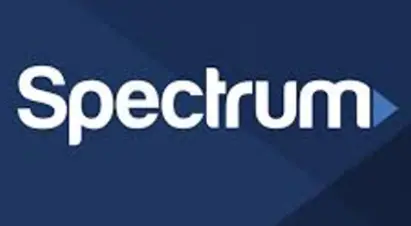
Advertisers above have met our
strict standards for business conduct.


